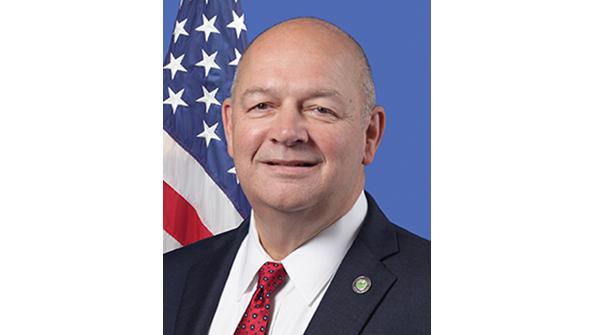
Approaching his second anniversary on the job, FAA Administrator Steve Dickson recently sat down with Aviation Week editors Sean Broderick and Graham Warwick for a wide-ranging discussion. Excerpts follow.
The FAA is changing its certification process in the aftermath of the Boeing 737 MAX issues. Can you talk a bit about the changes and how they will affect the industry? There are processes that we adopted immediately. [The Boeing 777X] is an example—we’re using a technical advisory board. We have a certification review team that’s meeting regularly to make sure that we have a holistic view across Flight Standards, across our Aircraft Certification group, extensive human factors and even environmental [issues]. We’ve got an entire team that’s meeting on a regular basis to make sure the project is managed and that communication is flowing across the entire agency, as it needs to. We’ve even got Air Traffic involved.
We are treating the aircraft as complex systems with full consideration of how all of the elements in the operating system interact. We are integrating human factors considerations throughout the design process in ways that really weren’t done in any manufacturing environment consistently before. That’s a foundational issue.
Another change is some revisions to the Flight Standardization Board process for evaluating and approving pilot training. What prompted them? We wanted to make sure we had a good cross-section of experience and demographics from around the world so that we weren’t just using U.S.-trained pilots. We had at least one [Multi-Crew Pilot License]-trained pilot on the Flight Standardization Board. We’ll continue to do that on all our certification projects going forward.
The 737 MAX flight control system redesign and training evaluations resulted in regulators such as the FAA and the European Union Aviation Safety Agency coming to different conclusions on a few issues. Should industry be concerned that yearslong efforts to harmonize as much as possible between major regulators are under threat? Harmonization never has meant, and never will mean, that everything is exactly the same, because regulatory systems are different. We are using similar processes. We are engaged. [We want] our stakeholders, manufacturers and operators to understand that we’re all working together to raise the safety bar around the world. It really is a team sport. I actually think that the last couple of years, the process we have been through has made us stronger. We have been extremely collaborative. We have been extremely transparent, and there have been lessons learned about how to strengthen safety processes, not only in the U.S. but around the world. We’re all learning from each other.
That doesn’t mean that there aren’t going to be professional disagreements from time to time or that there aren’t going to be debates about best practices or the way certain technologies are implemented. Those are actually very healthy debates for us to have. Ultimately, the last thing that you want in a safety organization is groupthink. We need to challenge each other.
Addressing global challenges goes far beyond today’s aircraft. The U.S. and Europe have taken somewhat different paths on certifying advanced urban air mobility (UAM), which has raised some concerns about the harmonization that has worked so well in the past. Can you update us on the progress with Europe on your approaches to UAM? Harmonization is an extremely important issue, but our systems are somewhat different. There is a tremendous amount of interest in urban air mobility and the broader application of these vehicles and eVTOL [electric vertical-takeoff-and-landing] aircraft in particular, which is really just one aspect. [The FAA] can certify new technologies such as these [now]. We might need to issue special conditions or additional requirements depending on the nature of the project. We’ve got three active UAM projects that are seeking certification right now. But we’re also talking with a number of other companies about their designs and future plans.
We will continue to work with our partners around the world. The aerospace industry in the U.S. is the most dynamic and most diverse anywhere in the world. We want these vehicles to be able to operate seamlessly within the airspace. That’s why we have set up an executive council within the FAA to deal with advanced air mobility, so that we can move forward in a coordinated fashion as an agency as these new technologies become more scalable and usable in society.
You’re working with a lot of companies that want to certify these new vehicles with technologies such as advanced flight controls and autonomy. This coincides with increased external scrutiny and internal changes on certification. Will some of these projects take longer than companies expect, or can the FAA move at the pace the industry wants to move? We need to be able to innovate at the speed of industry. There are many new ideas coming in from parts of the aerospace sector that may not be as mature or have as much experience dealing with the agency. The [Advanced Air Mobility Integration Executive Council] is extremely important because we don’t want a company that’s developing a new vehicle to get that vehicle certified and then not have the operating rules to be able to operate at scale.
We need to have the procedures within air traffic control for [new aircraft] to be managed by our controllers. We really need to take an enterprise approach to these issues and work with the private sector so that we can not only get their vehicles certified but also operationalize them while we are working toward certifying these new concepts.


